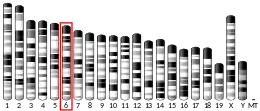| HEBP1 | |||||||||||||||||||||||||||||||||||||||||||||||||||
|---|---|---|---|---|---|---|---|---|---|---|---|---|---|---|---|---|---|---|---|---|---|---|---|---|---|---|---|---|---|---|---|---|---|---|---|---|---|---|---|---|---|---|---|---|---|---|---|---|---|---|---|
| |||||||||||||||||||||||||||||||||||||||||||||||||||
| Identifiers | |||||||||||||||||||||||||||||||||||||||||||||||||||
| Aliases | HEBP1, HBP, HEBP, heme binding protein 1 | ||||||||||||||||||||||||||||||||||||||||||||||||||
| External IDs | OMIM: 605826 MGI: 1333880 HomoloGene: 8407 GeneCards: HEBP1 | ||||||||||||||||||||||||||||||||||||||||||||||||||
| |||||||||||||||||||||||||||||||||||||||||||||||||||
| |||||||||||||||||||||||||||||||||||||||||||||||||||
| |||||||||||||||||||||||||||||||||||||||||||||||||||
| |||||||||||||||||||||||||||||||||||||||||||||||||||
| |||||||||||||||||||||||||||||||||||||||||||||||||||
| Wikidata | |||||||||||||||||||||||||||||||||||||||||||||||||||
| |||||||||||||||||||||||||||||||||||||||||||||||||||
Heme binding protein 1 is a protein that in humans is encoded by the HEBP1 gene.[5]
Function
The full-length protein encoded by this gene is an intracellular tetrapyrrole-binding protein. This protein includes a natural chemoattractant peptide of 21 amino acids at the N-terminus, which is a natural ligand for formyl peptide receptor-like receptor 2 (FPRL2) and promotes calcium mobilization and chemotaxis in monocytes and dendritic cells.[5]
References
- 1 2 3 GRCh38: Ensembl release 89: ENSG00000013583 - Ensembl, May 2017
- 1 2 3 GRCm38: Ensembl release 89: ENSMUSG00000042770 - Ensembl, May 2017
- ↑ "Human PubMed Reference:". National Center for Biotechnology Information, U.S. National Library of Medicine.
- ↑ "Mouse PubMed Reference:". National Center for Biotechnology Information, U.S. National Library of Medicine.
- 1 2 "Entrez Gene: Heme binding protein 1".
Further reading
- Jacob Blackmon B, Dailey TA, Lianchun X, Dailey HA (Nov 2002). "Characterization of a human and mouse tetrapyrrole-binding protein". Archives of Biochemistry and Biophysics. 407 (2): 196–201. doi:10.1016/s0003-9861(02)00471-x. PMID 12413491.
- Gao JL, Guillabert A, Hu J, Le Y, Urizar E, Seligman E, Fang KJ, Yuan X, Imbault V, Communi D, Wang JM, Parmentier M, Murphy PM, Migeotte I (Feb 2007). "F2L, a peptide derived from heme-binding protein, chemoattracts mouse neutrophils by specifically activating Fpr2, the low-affinity N-formylpeptide receptor". Journal of Immunology. 178 (3): 1450–6. doi:10.4049/jimmunol.178.3.1450. PMID 17237393.
- Micaelo NM, Macedo AL, Goodfellow BJ, Félix V (Nov 2010). "Tetrapyrrole binding affinity of the murine and human p22HBP heme-binding proteins". Journal of Molecular Graphics & Modelling. 29 (3): 396–405. doi:10.1016/j.jmgm.2010.07.008. PMID 20800521.
- Migeotte I, Riboldi E, Franssen JD, Grégoire F, Loison C, Wittamer V, Detheux M, Robberecht P, Costagliola S, Vassart G, Sozzani S, Parmentier M, Communi D (Jan 2005). "Identification and characterization of an endogenous chemotactic ligand specific for FPRL2". The Journal of Experimental Medicine. 201 (1): 83–93. doi:10.1084/jem.20041277. PMC 2212760. PMID 15623572.
- Devosse T, Dutoit R, Migeotte I, De Nadai P, Imbault V, Communi D, Salmon I, Parmentier M (Aug 2011). "Processing of HEBP1 by cathepsin D gives rise to F2L, the agonist of formyl peptide receptor 3". Journal of Immunology. 187 (3): 1475–85. doi:10.4049/jimmunol.1003545. PMID 21709160.
- Zylka MJ, Reppert SM (Dec 1999). "Discovery of a putative heme-binding protein family (SOUL/HBP) by two-tissue suppression subtractive hybridization and database searches". Brain Research. Molecular Brain Research. 74 (1–2): 175–81. doi:10.1016/s0169-328x(99)00277-6. PMID 10640688.
This article incorporates text from the United States National Library of Medicine, which is in the public domain.
This article is issued from Wikipedia. The text is licensed under Creative Commons - Attribution - Sharealike. Additional terms may apply for the media files.



